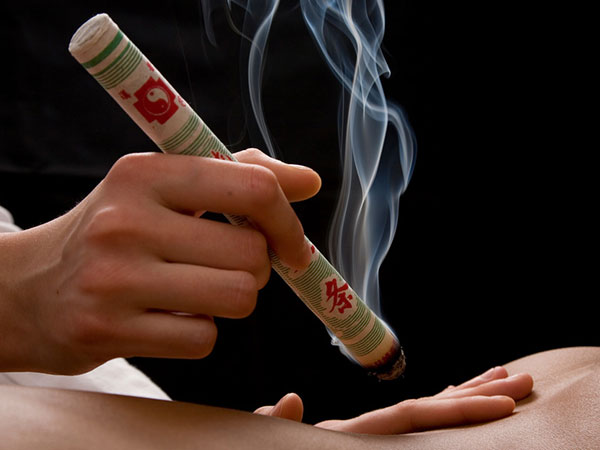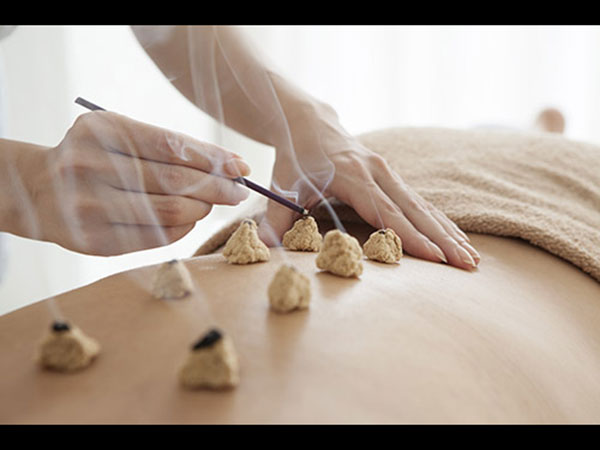Just In
- 2 hrs ago

- 2 hrs ago

- 4 hrs ago

- 12 hrs ago

Don't Miss
- Finance
 1:2 Stock Split, Dividend 100%, Net Soars 52.56%: Engineering Stock Soars 1576% In 3-Yrs
1:2 Stock Split, Dividend 100%, Net Soars 52.56%: Engineering Stock Soars 1576% In 3-Yrs - News
 Protests Erupt After 24-Year-Old Neha's Murder In BVB College Campus In Hubballi
Protests Erupt After 24-Year-Old Neha's Murder In BVB College Campus In Hubballi - Sports
 WWE Raw: Battle Royal announced to determine new Women’s World Champion
WWE Raw: Battle Royal announced to determine new Women’s World Champion - Movies
 Metro In Dino: When Ananya Panday Warns Sara Ali Khan Not To Touch Aditya Roy Kapur As She Pairs Up With Him
Metro In Dino: When Ananya Panday Warns Sara Ali Khan Not To Touch Aditya Roy Kapur As She Pairs Up With Him - Technology
 Garena Free Fire Max Redeem Codes for April 20, 2024: Get Access to the Latest In-game Loot
Garena Free Fire Max Redeem Codes for April 20, 2024: Get Access to the Latest In-game Loot - Automobiles
 Ford Mustang 60th Anniversary Package – Limited To Just 1,965 Units
Ford Mustang 60th Anniversary Package – Limited To Just 1,965 Units - Education
 Exam Pressure Does Not Exist; Studying Punctually is Crucial; Says Aditi, the PSEB 2024 Topper
Exam Pressure Does Not Exist; Studying Punctually is Crucial; Says Aditi, the PSEB 2024 Topper - Travel
 Journey From Delhi To Ooty: Top Transport Options And Attractions
Journey From Delhi To Ooty: Top Transport Options And Attractions
Moxibustion Alternative Therapy – Types & Applications
If you have ever researched Chinese medicine, then you surely would have come across a therapy called moxibustion. Although not as popular as acupuncture or other Chinese herbal treatments, moxibustion therapy is extremely soothing and provides ample number of health benefits.
If you suffer from certain stubborn health problems, then it might be a wise step to consider moxibustion therapy. Many health experts believe that for some diseases that cannot be treated by acupuncture, moxibustion might be the best solution.[1]
Read on to know more about the moxibustion treatment technique and its indications. Having enough knowledge about this alternative therapy can help you make more informed decisions about your health care.
What Is Moxibustion?
Moxibustion is a technique that is ideally used in traditional Chinese medicine. This technique is usually administered in conjunction with acupuncture. Moxibustion is a form of heat therapy that involves burning herbs (or dried plant materials called 'moxa' - usually made from the dried leafy material of Chinese mugwort), close to or directly on the skin, and applying the resulting heat to specific areas (points) on the body.[2]

The intention of this technique is to warm and stimulate the flow of Qi (in Chinese culture, Qi is believed to be a vital force forming part of any living entity) in the body and eventually dispel certain pathogenic influences.[3]
Modern day medicine considers moxa as a natural diuretic and also a moderate stimulant. Moxa is also believed to be an emmenagogue[4] , which triggers an increase of blood flow to the pelvic area (especially the uterus). It has therefore found use as a treatment for curing menstruation cramps.
This therapy can effectively stimulate sluggish, stagnated and deficient Qi through the application of therapeutic heat. This therapy also works by amplifying the healing properties and effects of acupuncture, thus alleviating chronic stagnation.
Types Of Moxibustion
Healthcare experts might use direct or indirect methods to administer a moxibustion treatment. The modality offered depends on the clinic as well as the patient's preference.[5]
• Direct moxibustion
This entails extremely close (direct) contact with the skin. The direct form of moxibustion is usually done after a patient begins to relax on the acupuncture table. The practitioner would ignite an incense stick to lighten the moxa (in the form of herbal wool).
On being ignited, the wool smoulders, creating warmth. This warmth is provided on the relevant acupoints (this is likely to vary depending on the patient's condition and other personal attributes) [6] . As in the case of direct moxibustion, the burning moxa is directly placed on the skin, it can cause pain and scarring. Hence, direct moxibustion is no longer used very often.

• Indirect moxibustion
There are different ways of performing indirect moxibustion and it mostly depends on what the practitioner's preference is. The following are three different ways of performing indirect moxibustion.
1. The therapist holds the smoking end of a moxa stick (moxa material compressed into a stick or pole) very close to the skin. This is done until the acupoint adequately warms. This ensures that the blood and other vital fluids have been sent along the correct meridians, thus healing the patient's ailments [7] . In case the patient is concerned about smoke inhalation, then the practitioner might prefer using slower-burning smokeless moxa sticks.
2. A warmer is used. This is like a buffer between the stick and the skin. The buffer is usually in the form of aconite, salt or slices of garlic or ginger [8] . This technique provides deep warmth to the body.
3. Acupuncture needles are wrapped with small balls of moxa. These balls are lighted until they become smoking hot. The heat gets driven down the needle shaft and then into the acupuncture point. This enhances the needling effect [9] . Patients report a warm and soothing sensation during and after the acu-moxibustion session.

Applications Of Moxibustion
Chinese healthcare providers highly recommend moxibustion therapy as it can help in increasing the flow of vital energy throughout the body through pathways (meridians). Stimulating Qi is essential to attain overall well-being [10] . Chinese medicine believes that physical and mental health problems arise when there is a result in the blockage of Qi.It is believed that moxibustion can treat the following health issues [11] :
•
Back
pain
•
Headaches
•
Migraines
•
Arthritis
•
Muscle
stiffness
•
Digestive
problems
•
Ulcers
•
Menstrual
cramps
•
Cancer
•
Infertility
•
Tendonitis
•
Hypothyroidism
•
Hypoglycemia
•
Depression
Research studies have shown one interesting application of moxibustion therapy for pregnant women. It was observed that moxibustion had the potential to turn breech babies [12] (those who are upside down at the end of the pregnancy term). Studies reveal that moxibustion, when combined with postural techniques or acupuncture can turn babies over such that they are in a less dangerous position during birth.

Risk Factors
Moxibustion is considered highly unsafe for people with diabetes. Also, the oils from wormwood and mugwort can result in toxic reactions when taken internally[13] . It is always advisable to consult your doctor before going ahead with a moxibustion therapy. Moreover, pregnant women should strictly use moxibustion therapy only after being allowed to do so by their healthcare provider.
On A Final Note...
There is ample clinical research to support the healing properties of moxibustion therapy. With an increased awareness of its benefits, this therapy is sure to be considered for more studies about its uses, mechanisms and benefits.
Moxibustion therapy is believed to be helpful for people for whom other treatments have failed. Unlike acupuncture (mostly done by a trained practitioner in a clinical atmosphere), moxibustion therapy can be done at home [14] . Therapists would usually provide moxa rolls to the patients alongside demonstrating how to use them and treat themselves at home.
- [1] Shu, Q., Wang, H., Litscher, D., Wu, S., Chen, L., Gaischek, I., … Liang, F. (2016). Acupuncture and Moxibustion have Different Effects on Fatigue by Regulating the Autonomic Nervous System: A Pilot Controlled Clinical Trial.Scientific reports,6, 37846.
- [2] Deng, H., & Shen, X. (2013). The mechanism of moxibustion: ancient theory and modern research.Evidence-based complementary and alternative medicine : eCAM,2013, 379291.
- [3] Chung, V. C., Ma, P. H., Lau, C. H., Wong, S. Y., Yeoh, E. K., & Griffiths, S. M. (2012). Views on traditional Chinese medicine amongst Chinese population: a systematic review of qualitative and quantitative studies.Health expectations : an international journal of public participation in health care and health policy,17(5), 622–636.
- [4] Yang, X., Xiong, X., Yang, G., & Wang, J. (2014). Effectiveness of Stimulation of Acupoint KI 1 by Artemisia vulgaris (Moxa) for the Treatment of Essential Hypertension: A Systematic Review of Randomized Controlled Trials.Evidence-based complementary and alternative medicine : eCAM,2014, 187484.
- [5] Yi, S. H. (2009). Thermal properties of direct and indirect moxibustion.Journal of Acupuncture and Meridian Studies,2(4), 273-279.
- [6] Chiu J. H. (2013). How does moxibustion possibly work?.Evidence-based complementary and alternative medicine : eCAM,2013, 198584.
- [7] Lee, M. S., Choi, T. Y., Park, J. E., Lee, S. S., & Ernst, E. (2010). Moxibustion for cancer care: a systematic review and meta-analysis.BMC cancer,10, 130.
- [8] Kim, H. G., Yoo, S. R., Park, H. J., & Son, C. G. (2013). Indirect moxibustion (CV4 and CV8) ameliorates chronic fatigue: a randomized, double-blind, controlled study.Journal of alternative and complementary medicine (New York, N.Y.),19(2), 134–140.
- [9] Anastasi, J. K., Capili, B., & Chang, M. (2017). Development of Acupuncture and Moxibustion Protocol in a Clinical Trial for Irritable Bowel Syndrome.Journal of acupuncture and meridian studies,10(1), 62–66.
- [10] Yang, Y., Wang, L. P., Zhang, L., Wang, L. C., Wei, J., Li, J. J., & Sun, Y. L. (2013). Factors contributing to de qi in acupuncture randomized clinical trials.Evidence-based complementary and alternative medicine : eCAM,2013, 329392
- [11] Park, J. E., Sul, J. U., Kang, K., Shin, B. C., Hong, K. E., & Choi, S. M. (2011). The effectiveness of moxibustion for the treatment of functional constipation: a randomized, sham-controlled, patient blinded, pilot clinical trial.BMC complementary and alternative medicine,11, 124.
- [12] Coyle, M. E., Smith, C. A., & Peat, B. (2012). Cephalic version by moxibustion for breech presentation.Cochrane Database of Systematic Reviews, (5).
- [13] Cui, Y., Zhao, B., Huang, Y., Chen, Z., Liu, P., Huang, J., & Lao, L. (2013). Effects of Moxa (Folium Artemisiae argyi) Smoke Exposure on Heart Rate and Heart Rate Variability in Healthy Young Adults: A Randomized, Controlled Human Study.Evidence-based complementary and alternative medicine : eCAM,2013, 510318.
- [14] Lee, M. S., Kang, J. W., & Ernst, E. (2010). Does moxibustion work? An overview of systematic reviews.BMC research notes,3, 284.
-
 wellnessDid You Know Your Own Blood Can Be Used For Pain Relief?
wellnessDid You Know Your Own Blood Can Be Used For Pain Relief? -
 health5 Things To Try In Addition To Therapy For Mental Health Illnesses
health5 Things To Try In Addition To Therapy For Mental Health Illnesses -
 healthUncovering the Rise of Physiotherapy Practices in India
healthUncovering the Rise of Physiotherapy Practices in India -
 healthIs Yoga Better Than Therapy For Depression?
healthIs Yoga Better Than Therapy For Depression? -
 insyncA Creative Studio That Harmonizes Your Brand’s Strategy And Takes It To Therapy!
insyncA Creative Studio That Harmonizes Your Brand’s Strategy And Takes It To Therapy! -
 wellnessWhat Is Psychedelic Therapy? Benefits And Risks Of The Future Of Mental Health Treatment
wellnessWhat Is Psychedelic Therapy? Benefits And Risks Of The Future Of Mental Health Treatment -
 wellnessHow To Deal With Alcohol Withdrawal Syndrome
wellnessHow To Deal With Alcohol Withdrawal Syndrome -
 wellnessDid You Know? Stress Is Good For You! Here's Why
wellnessDid You Know? Stress Is Good For You! Here's Why -
 disorders cureStuttering: Types, Symptoms, Causes, Diagnosis And Treatment
disorders cureStuttering: Types, Symptoms, Causes, Diagnosis And Treatment -
 marriage and beyondMarriage Counselling: What Is It And How Does It Work
marriage and beyondMarriage Counselling: What Is It And How Does It Work -
 disorders cureAyurvedic Management Of Spondyloepiphyseal Dysplasia Tarda (SEDT)
disorders cureAyurvedic Management Of Spondyloepiphyseal Dysplasia Tarda (SEDT) -
 disorders cureBudwig Diet: Is It Effective Against Cancer?
disorders cureBudwig Diet: Is It Effective Against Cancer?


 Click it and Unblock the Notifications
Click it and Unblock the Notifications



